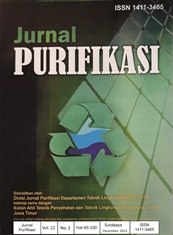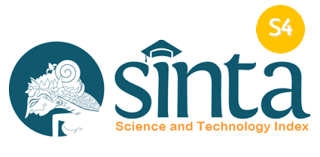WASTEWATER TREATMENT USING ELECTROCOAGULATION FOR TOMATO KETCHUP INDUSTRY
Main Article Content
Abstract
One of the most dangerous food industry wastes is the liquid resulting from the production of tomato sauce, which contains many organic substances and suspended solids. Electrocoagulation, a method for processing tomato sauce liquid waste, is environmentally friendly, easy to use, and saves land. Many people use plate-shaped electrodes for electrocoagulation, but cylindrical electrodes usually have lower power consumption during the process. By considering ideal conditions, this research aims to determine the ideal use of differences in current strength, pH and anode material. In addition, they also wanted to determine the specific energy consumption and amount of sludge in the cylindrical reactor. The quality of the electric current of 30 A, 35 A, and 40 A is the variable used in this research. The second variable is pH, which ranges between 6.7 and 8. The anode material used is iron, the parameters tested are pH, BOD and Phosphate. The results showed that at pH 8, a current strength of 40 A using an iron anode had a removal percentage of BOD and Phosphate of 83.52 ± 0.44% (1,358.00 mg/L) and 74.90 ± 0.98% (189. 41 mg/L). The specific energy consumption obtained for each parameter is 1.71 Wh/gBOD and 20.38 Wh/gP.
Downloads
Article Details
Submission of a manuscript to Jurnal Purifikasi means that the work has never been published in another journal and is not under consideration for publication elsewhere. The author hereby agrees to submit the copyright of the manuscript and its contents to Jurnal Purifikasi, if accepted for publication. Accepted manuscripts will be published in printed form where the ISSN is bound in printed form, not in online form (pdf). Authors are not allowed to publish their work in other forms (journals) without permission from the Jurnal Purifikasi manager.
By submitting a manuscript, the author is deemed to know all the rights and obligations attached to each manuscript.








